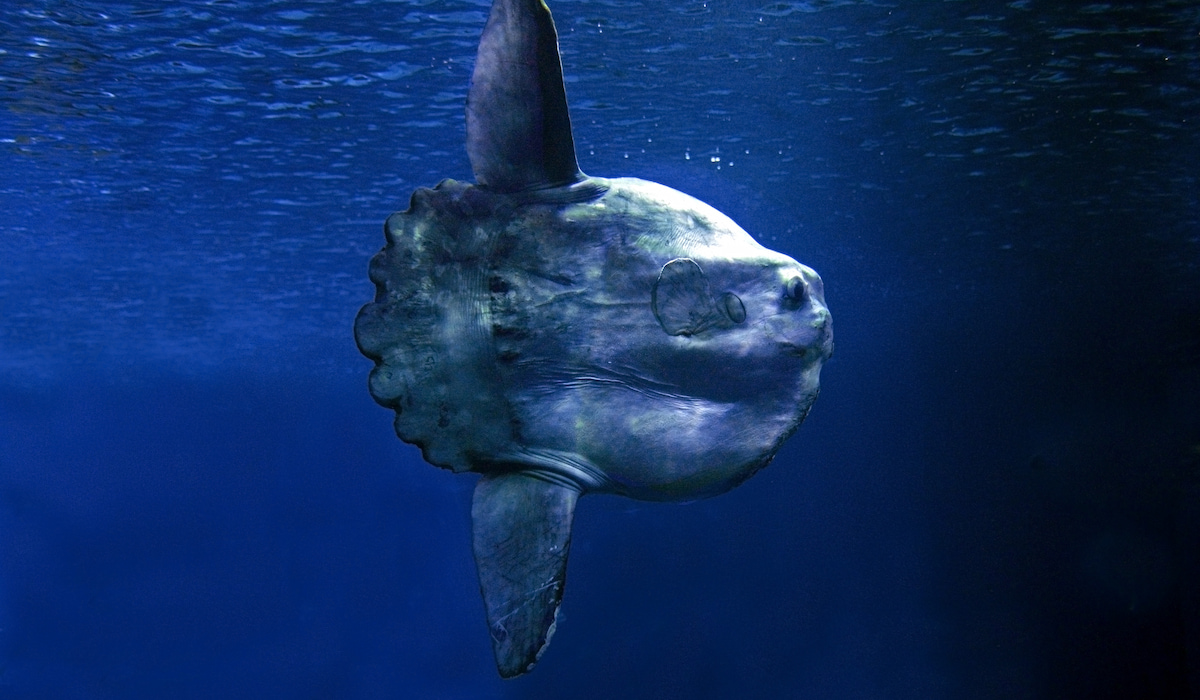19 Cool Facts About Sunfish
There is a beautiful fish that is often overlooked in the aquatic world called the sunfish. Its name comes from its habit of basking near the surface of the water. You will find this fish in both fresh and saltwater habitats.
Sunfish, like all other fish, are sensitive to environmental changes such as pollution and climate change. They live in temperate and tropical waters throughout the world.

If you are curious about this type of fish, their lifespan, their habitat, population size, distribution range, diet habits, reproduction habits along with other fun facts, here are 19 cool facts about sunfish.
1. They are Huge
The sunfish is known to be the heaviest bony fish. The heaviest mature sunfish on record that was caught off Kamagowa in Japan weighed 5,070 pounds. It was 8 feet 11 inches long.
A longer Sunfish found off Aji Island, Japan, was 10 feet 10.7 inches. They definitely weigh more than a car.
2. Productive egg layers
Female sunfish can lay up to 300 million eggs at once. They hold the record as the most fertile egg layers, more than any other vertebrate. Only a small percent of the hatched eggs survive to adulthood.
Female sunfish release eggs while the males release sperm into the water column to increase the likelihood of fertilizing the eggs.
3. They love sunbathing
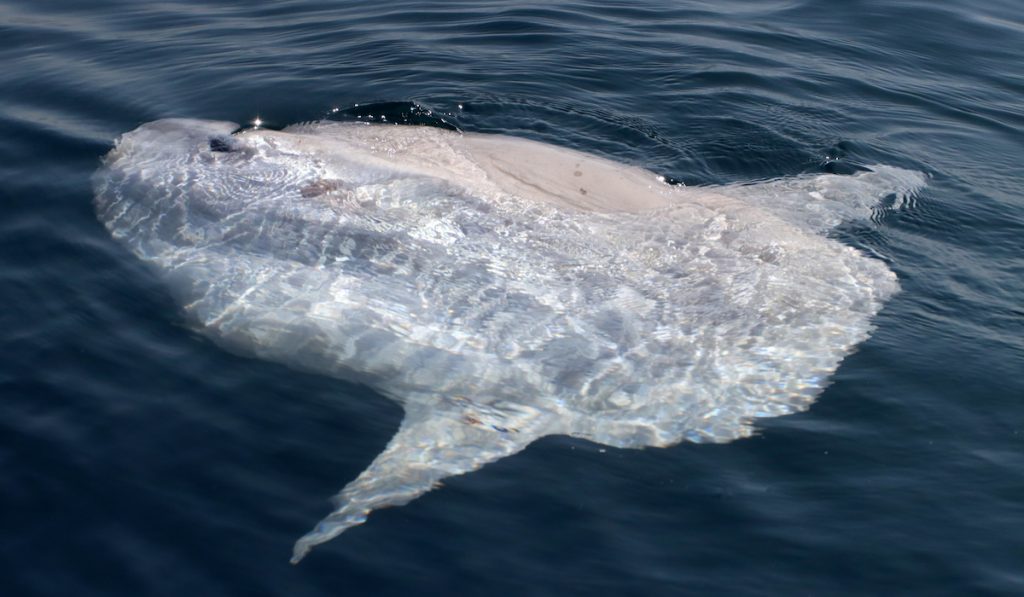
They hunt deep in the darkest parts of the ocean and go near the water surface to reheat their bodies. You will most likely see them lying on their sides as if playing dead.
This also helps them with digestion. The name Sunfish comes from this habit.
4. They Undergo Extreme Growth
When they are hatched, the larvae are only 2.5 mm long and weigh less than a gram. They pass through two larval phrases. The first phase is when they look like puffer fish with round bodies, well-developed tails, and spines.
During the second larval phase, they reabsorb their tails and lose the spines. By the time they are adults, they will have outgrown their birth size by millions!
5. They are Good Hosts
Sunfish can host over 40 different parasites. When they bask at the ocean’s surface, sea birds get to feed on those parasites.
And to get these parasites off their skin, they go to kelp where wrasses and small fish pick at them.
6. Their Main Food is Jellyfish
Sunfish eat large amounts of jellyfish, squids, salps, fish larvae, crustaceans, eelgrass, and small fish to support their large bodies.
7. They Have an Elongated Dorsal Fin
Sunfish have an elongated dorsal fin that goes from above their eyes to the middle of their back. The upper lobe on the tail is twice as long as the lower lobe.
8. Their Physical Structure
Sunfish are bony fish with a large flattened head, small eyes, and a large mouth. They have small fins and a long dorsal fin.
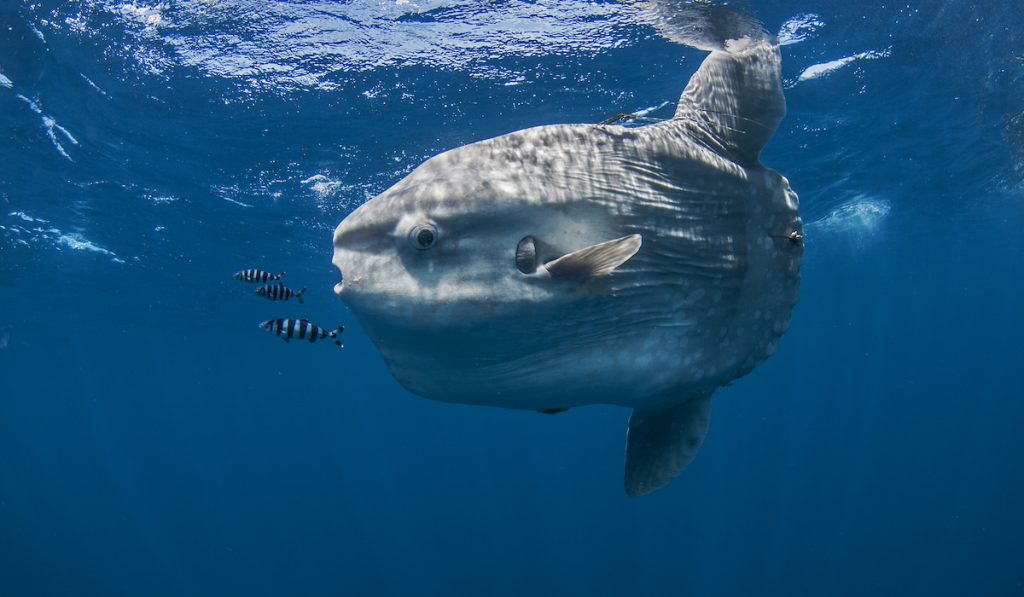
9. They Have Beaks
Yes, you read that right. Ocean sunfish have beaks. Their teeth have a beak-like structure due to their mouths being fused together.
The beak helps sunfish to hold on to slippery jellyfish as they eat them. They also have pharyngeal teeth in their throats.
10. Sunfish Have Thick Skins
Unlike other fish, sunfish don’t have scales but instead possess thick, rubber-like skin covered in mucus.
11. They are Not Dangerous
Ocean sunfish don’t pose threats to humans although they have strong teeth and jaw muscles that are as powerful as an industrial bolt cutter.
12. Four Species of Sunfish
The four types of sunfish are Mola mola (common fish), Ranzania laevis (slender sunfish), Masterus lanceolutus (sharp-tailed sunfish) and Mola ramsayi (southern ocean fish).
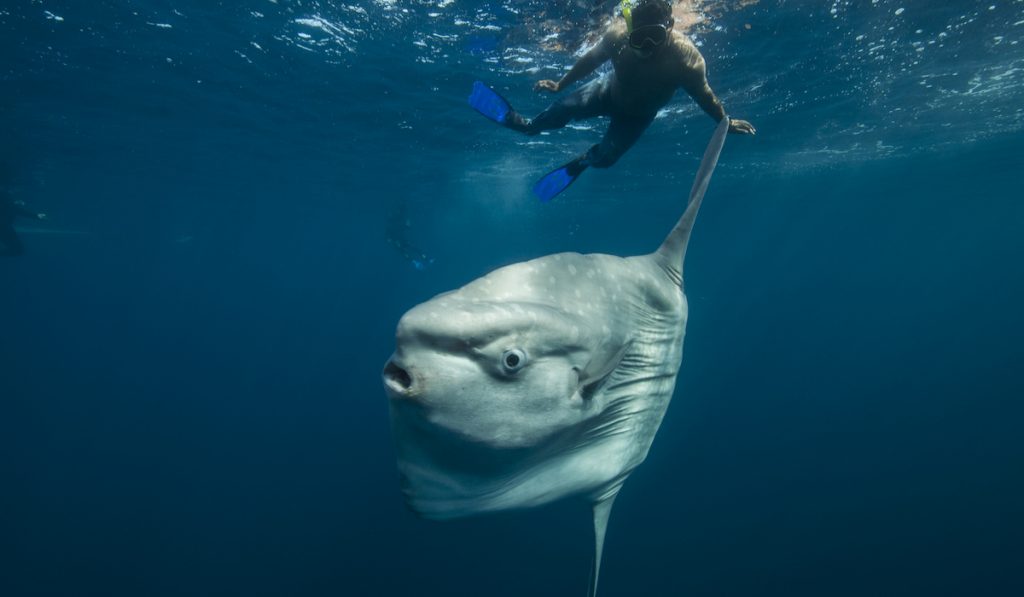
13. Where is The Baby Sunfish Made?
No one knows! Scientists are yet to find a breakthrough as to where sunfish spawn. However, several possible areas in the Atlantic, Indian and Pacific oceans have been identified.
14. They Have No tail
Instead of a tail, sunfish have their dorsal and anal fins fused together into what is called a clavus. They swim by flapping the fused dorsal and anal fins in sync like a pole with a flat blade.
The dorsal fin is located about two-thirds of the way down the length of their bodies.
15. Less Natural Predators
Adult sunfish are too large to have many predators. As medium-sized, they are eaten by killer whales, sea lions, and large sharks. California sea lions attack small ocean sunfish by eating their fins and play with them as frisbees.
16. Unusual Skeletons
Sunfish have unusual skeletons as their spinal column has fewer vertebrae and is much shorter than that of other fish.
Their skeleton is cartilaginous. The sunfish lack ribs.
17. A Form Of Tax Payment
The Japanese used sunfish as a source of tax payment during the 1600s and the 1700s.
This shows that sunfish were valuable to them.
18. Swimming Heads
Germans call sunfish swimming heads! Schwimmender Kopf is what they call it in German.
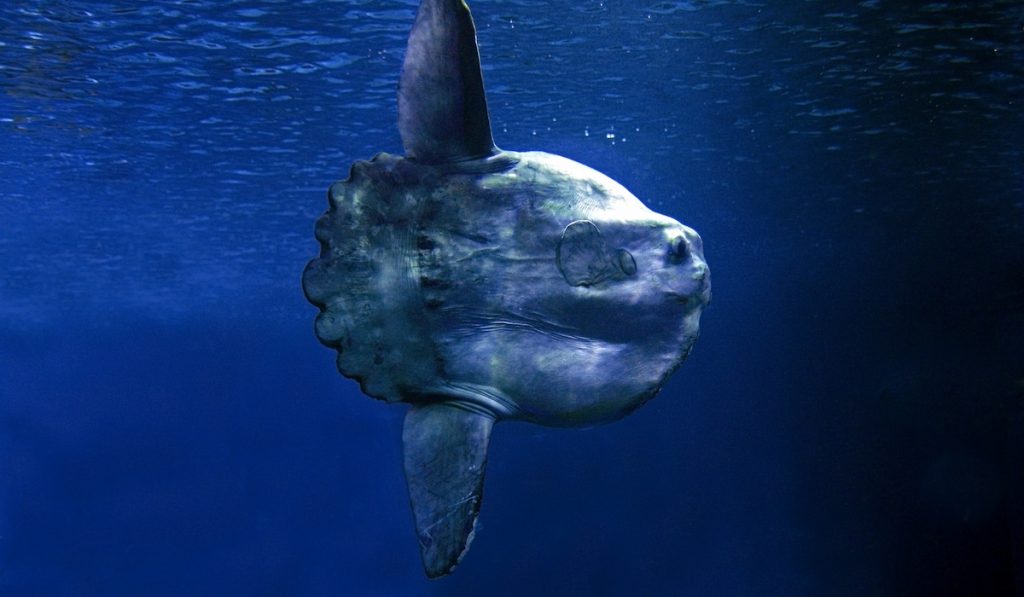
The polish call them samogłów, meaning head alone.
19. Endangered Species
Sunfish is an endangered species. Unfortunately, they get hit by boats and are caught in fishing nets.
As delicious as they may be, many government authorities won’t allow you to have them on your dinner plate.
Final Thoughts
Mola mola is a fascinating fish that you will be in awe of if you happen to see them in the wild.
These endangered species deserve to be protected. Whether you love deep diving or you are a fisher, always strive to protect this endangered species.
